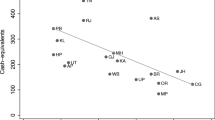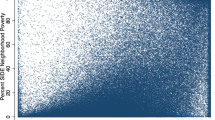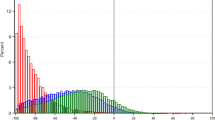Abstract
Educational expansion, long a goal of many LDCs, has become a difficult policy to pursue. Growing populations, shrinking national incomes and higher marginal costs of schooling as schooling reaches more rural dwellers have caused policy makers to take a hard look at factors which influence educational demand and expansion. This paper examines the case of Peru where rural areas have yet to attain the nearly universal enrollment of urban areas. The study examines 2500 rural households to explore reasons why children do not attend school, drop out of school, and begin school at later ages. The study finds that the monetary costs of schools (fees and other costs) have a substantial influence on parental decisions regarding school attendance and continuation. Sensitivity analysis reveals that mother's education has a bearing on their children's educational participation, particularly in low-income households. Sensitivity analysis also reveals that school attendance of low income and female children are most strongly affected by simulated changes in school fees.
Zusammenfassung
Die Ausdehnung des Schulwesens, seit langem Ziel vieler weniger entwickelten Länder, wird immer schwieriger. Wachsende Bevölkerungszahlen, sinkendes Volkseinkommen und höhere Grenzkosten im Schulwesen, da die Landbevölkerung vermehrt einbezogen wird, haben Politiker dazu veranlaßt, die Gründe für die Nachfrage nach Schulbildung und deren Ausweitung genau zu analysieren. In dieser Studie wird der Fall Peru untersucht, wo die ländliche Gegenden die fast 100%ige Schulbeteiligung der Städte noch erreichen müssen. Die Studie umfaßt 2.500 ländliche Haushalte, und sollte herausfinden, warum Kinder nicht zur Schule gehen, früh abgehen oder zu spät eingeschult werden. Es stellte sich heraus, daß Schulkosten (Schulgebühren und andere Kosten) einen erheblichen Einfluß auf die Entscheidung der Eltern über den Schulbesuch ihrer Kinder und das Verbleiben auf der Schule haben. Eine Sensibilitätsanalyse fand heraus, daß sich die Schulbildung der Mutter, besonders in Haushalten mit wenig Einkommen, auf die Schulbeteiligung der Kinder auswirkt. Diese Analyse zeigt auch, daß weibliche Schüler aus Familien mit wenig Einkommen am stärksten von simulierten Änderungen der Schulgebühren betroffen waren.
Résumé
L'expansion du système scolaire, depuis longtemps but de bon nombre de pays moins développés, est une politique qui devient difficile à poursuivre. Populations croissantes, revenus nationaux réduits, augmentation des coûts marginaux de scolarisation tant que celle-ci atteint les milieux ruraux, ont mené les décideurs à examiner de près les facteurs qui influent sur la demande de scolarisation et l'expansion du système scolaire. Cet article s'addresse au cas du Pérou, où les zones rurales ont toujours à atteindre le taux de scolarisation presque universelle des zones urbaines. L'étude examine 2500 foyers ruraux pour explorer pourquoi les enfants ne fréquentent pas l'école, quittent l'école prématurément, et commencent leur carrière scolaire à un âge plus avancé. L'étude montre que les coûts monétaires de la scolarisation (frais d'inscription et autres) exercent une influence importante sur la décision des parents quant à l'inscription scolaire et à la continuation des études. Une analyse de sensibilité révèle également que la scolarisation des enfants de familles à revenus faibles ainsi que celle des filles, sont les plus touchées par la simulation de changements des frais scolaries.
Similar content being viewed by others
References
Armitage, J. and Sabot, R. 1987. Efficiency and Equity Implications of Subsidies of Secondary Education in Kenya. In: D. Newberry and N. Stern, eds.,The Theory of Taxation for Developing Countries. New York: Oxford University Press.
Behrman, J. and Birdsall, N. 1983. The Quality of Schooling: Quantity Alone is Misleading.American Economic Review 73: 926–996.
Birdsall, N. 1983. Strategies for Analyzing Effects of User Charges in the Social Sectors (Country Policy Department Discussion Paper # 1983-9). Washington, DC: World Bank.
Blomqvist, A. 1982. Education, Unemployment and Government Job Creation for Graduates in LDCs. In: T. Barker, A. Downes and J. Sackey, eds.,Perspectives on Economic Development: Essays in Honour of W. Arthur Lewis. Washington, DC: University Press of America.
Bray, M. 1986. If UPE is the Answer, What is the Question? A Comment on Weaknesses in the Rationale for Universal Primary Education in Less Developed Countries.International Journal of Educational Development 6: 147–158.
Brimer, M. and Pauli, L. 1971.Wastage in Education: A World Problem. Paris: Unesco.
Colclough, C. 1982. The Impact of Primary Schooling on Economic Development: A Review of the Evidence.World Development 10: 167–185.
Colclough, C. and Hallak, J. 1976. Some Issues in Rural Education: Equity, Efficiency and Employment.Prospects 6: 501–525.
Edwards, L.N. 1975. The Economics of Schooling Decisions: Teenage Enrollment Rates.Journal of Human Resources 10: 155–173.
Eicher, J.C. 1984. Educational Costing and Financing in Developing Countries: Focus on Sub-Saharan Africa (Staff Working Paper No. 655). Washington, DC: World Bank.
Garrett, R.M. 1985. Disparities and Constraints in Peruvian Education. In: C. Brock and and H. Lawlor, eds.,Education in Latin America. London: Croom Helm.
Ginsberg, A., Moskowitz, J. and Rosenthal, A. 1982. Interpreting Change in Educational Equity.Economics of Education Review 2: 331–349.
Grootaert, C. and Arriagada, A. M. 1986. The Peruvian Living Standards Survey: An Annotated Questionnaire Unpublished mimeo. Washington DC: World Bank Education and Training Division.
Haddad, W. 1979. Education and Economic Effects of Promotion and Repetition Practices (Staff Working Paper No. 319). Washington, DC: World Bank.
Hay, G.A. 1976.Educational Finance and Educational Reform in Peru. Paris: Unesco.
Heyneman, S. and Siev White, D. eds. 1986.The Quality of Education and Economic Development. Washington DC: World Bank.
Instituto Nacional De Estadistica and The World Bank 1986.Peru Living Standards and Informal Sector Survey: Initial Results 1986. Washington, DC: World Bank.
Jamison, D.T. and Lockheed, M. 1985. Participation in schooling: Determinants and learning outcomes in Nepal. (Education and Training Department Discussion Paper # 3). Washington, DC: World Bank.
Jimenez, E. 1987.Pricing Policy in the Social Sectors: Cost Recovery for Education and Health in Developing Countries. Baltimore: Johns Hopkins University Press.
King, E.M. 1982. Investment in Schooling: An Analysis of Demand in Low-income Households.Dissertation Abstracts International 42 (University Microfilms No. 82–21, 417).
Lee, K. 1984.Universal Primary Education: An African Dilemma. (Education and Training Department). Washington DC: World Bank.
Levin, H. 1984. Assessing the Equalization Potential of Education.Comparative Education Review 28: 11–27.
Lockheed, M.E. and Verspoor, A.M. 1990.Improving Primary Education in Developing Countries. Washington, DC: World Bank.
McGuire, M. and Aaron, H. 1969.Efficiency and Equity in the Optimal Supply of a Public Good. Washington DC: The Brookings Institution.
McMahan, W. and Geske, T. 1982.Financing Education: Overcoming Inefficiency and Inequity. Champaign, Illinois: University of Illinois Press.
Mingat, A. and Tan, J.P. 1986. On the Quality of Education in Developing Countries: Another View. Paper presented at a conference on the Economics of Education: Tackling the New Policy Issues. Dijon: Institut de Recherche sur l'Economie de l'Education.
Ministerio de Educación 1972.Ley general de educación: Decreto-ley 19326. Lima: Oficina de Impresos Gubernamental.
Moock, P.R. and Leslie, J. 1986. Childhood Malnutrition and Schooling in the Terai Region of Nepal.Journal of Development Economics 20: 33–52.
Psacharopoulos, G. 1977. The Perverse Effects of Public Subsidization of Education, Or, How Equal is Free Education?Comparative Education Review 21:69–90.
Rosenzweig, M. 1977a. Farm-family Schooling Decisions: Determinants of the Quantity and Quality of Education in Agricultural Populations.Journal of Human Resources 12: 71–91.
—— 1977b. The Demand for Children in Farm Households.Journal of Political Economy 85: 123–146.
Rosenzweig, M. and Evanson, R. 1977. Fertility, Schooling and Economic Contributions of Children in Rural India: An Econometric Analysis.Econometrica 45: 1065–1079.
Schultz, T. 1972. Optimal Investment in Education: The Equity-efficiency Quandary.Journal of Political Economy 80: 34–66.
Tan, J.P., Lee, K.H. and Mingat, A. 1984.User Charges for Education: The Ability and Willingness to Pay in Malawi (Staff Working Paper No. 661). Washington, DC: World Bank.
Thobani, M. (1983). Charging User Fees for Social Services: The Case of Education in Malawi (Staff Working Paper No. 572). Washington, DC: World Bank.
Unesco 1984. Wastage in Primary Education from 1970–1980.Prospects 14: 347–367.
—— 1985.Unesco Statistical Yearbook, 1985. Paris: Unesco.
Venkatasubramanian, K. 1978.Wastage in Primary Education: The Problem in General and With Special References to Tamil Nadu, India. Bombay: Orient Longman.
World Bank. 1986.Financing Education in Developing Countries: An Exploration of Policy Options. Washington, DC: World Bank.
——. 1988.Education in Sub-Saharan Africa: Policies for Adjustment, Revitalization and Expansion (World Bank Policy Study # 10996). Washington, DC: World Bank.
Additional information
The authors thank Steve Klees for his comments on an earlier draft of this paper.
Rights and permissions
About this article
Cite this article
Ilon, L., Moock, P. School attributes, household characteristics, and demand for schooling: A case study of rural Peru. Int Rev Educ 37, 429–451 (1991). https://doi.org/10.1007/BF00597620
Issue Date:
DOI: https://doi.org/10.1007/BF00597620




